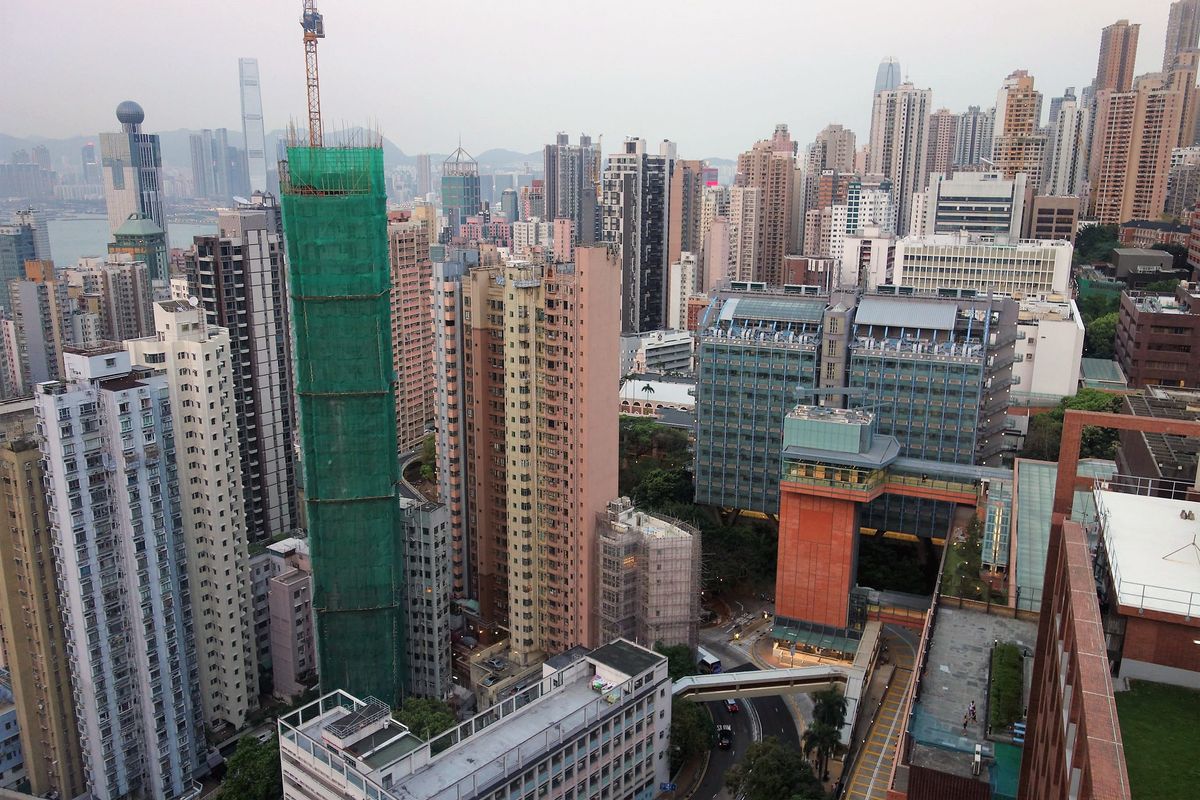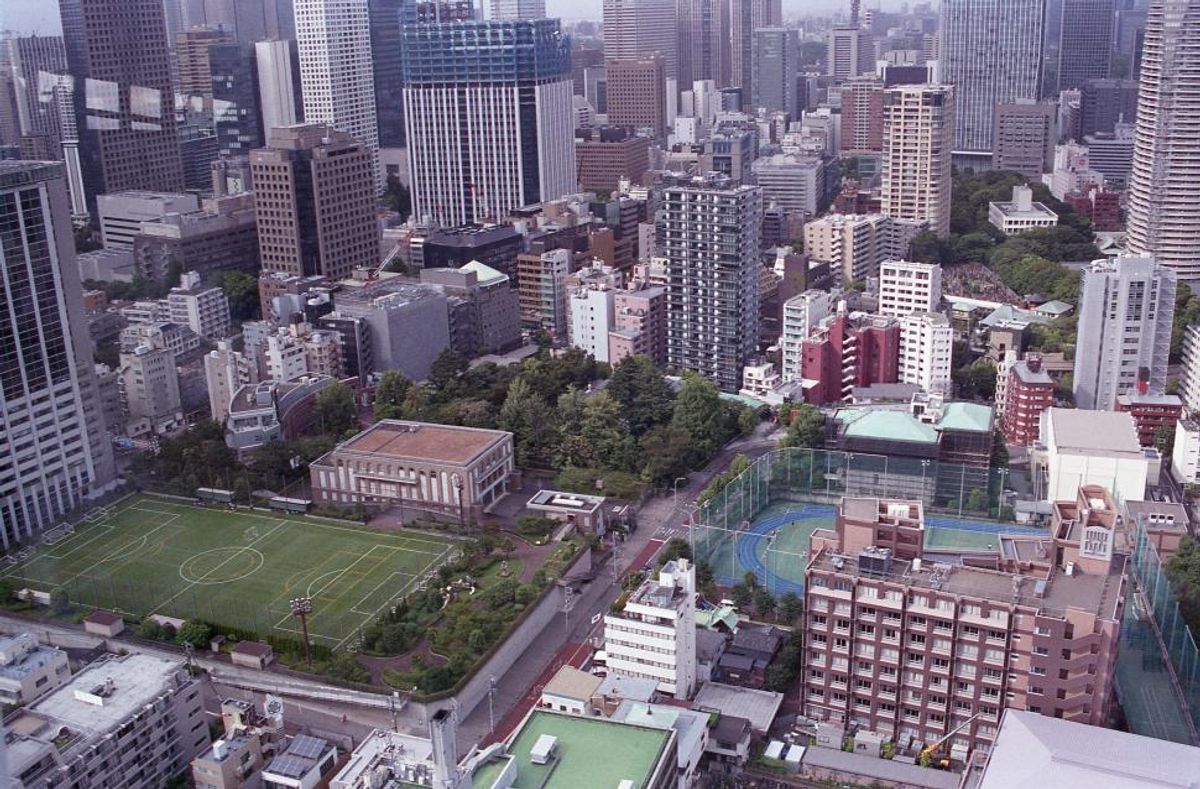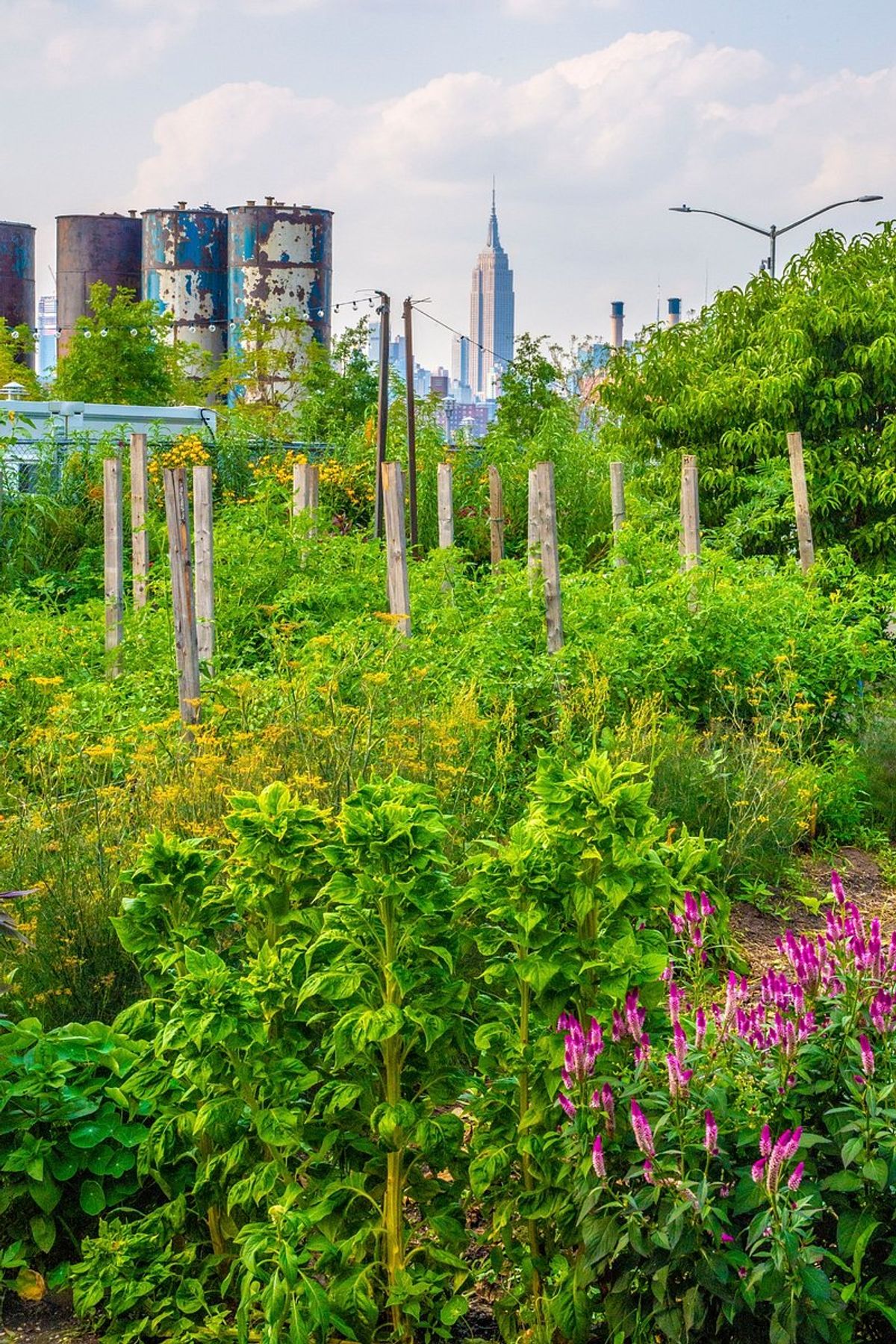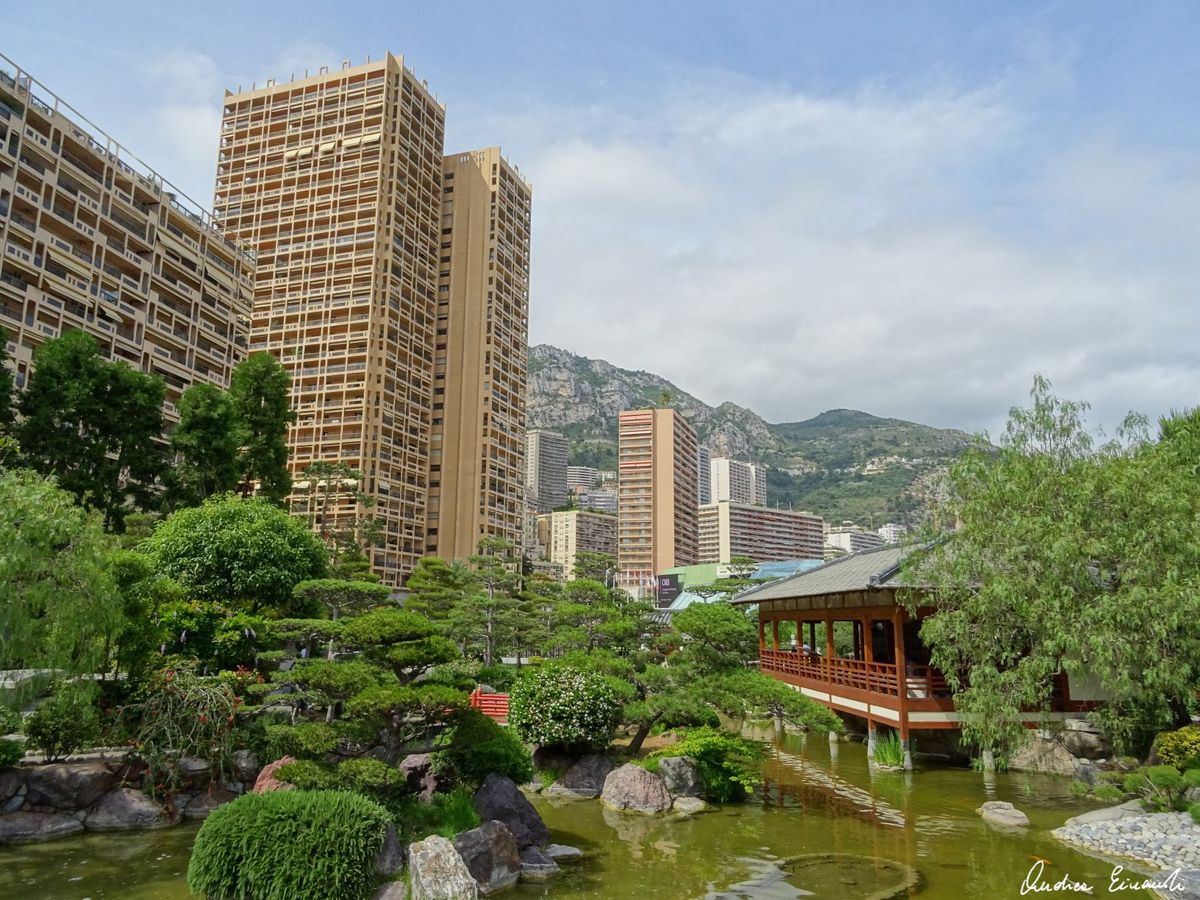Urban horticulture is undergoing a transformative phase with the integration of innovative technologies and community-driven initiatives. Vertical greening, a key component of this evolution, is reshaping the aesthetic, environmental, and social dynamics of urban landscapes.
This article explores the latest advancements, future prospects, and strategic implementations of vertical gardens, highlighting their role in fostering urban sustainability and community engagement.
Table of Contents
Key Takeaways
- Technological innovations such as integrated drip irrigation systems are enhancing the efficiency and sustainability of vertical gardens in urban centers.
- Demonstration sites serve as catalysts for wider adoption of vertical greening, demonstrating the potential for synergy with urban infrastructure.
- Policy measures and community building are crucial for the transformation of urban spaces into thriving green infrastructures.
- The future of urban landscapes includes ubiquitous greening through building codes and the re-wilding of cities with vertical gardens.
- Design and implementation of vertical gardens require careful species selection and consideration of irrigation and drainage for long-term sustainability.
Technological Advances in Vertical Greening Innovations in Urban Horticulture

Integrated Drip Irrigation Systems
The advent of integrated drip irrigation systems has revolutionized the way water is delivered to vertical gardens. These systems are meticulously engineered to meet the fluctuating moisture demands of plants, ensuring that water is applied in controlled amounts directly to the roots. This targeted approach not only minimizes waste but also enhances plant growth and health.
- Smart garden technology incorporates moisture sensors that monitor soil water levels and adjust irrigation accordingly.
- Rainwater harvesting and programmed timers are employed to further conserve water and support plant vitality.
- Structural considerations, such as wall mounts and waterproof membranes, are essential to accommodate the irrigation system while protecting the building infrastructure.
By optimizing water usage, integrated drip irrigation systems contribute significantly to the sustainability of urban green spaces, making them a key component in the development of eco-friendly cities.
Demonstration Sites as Catalysts
Demonstration sites serve as living proof of the potential for vertical greening in urban environments. Some cities install prominent, innovative vertical greening displays as symbols catalyzing private applications. These sites not only showcase the aesthetic appeal but also demonstrate the functional benefits, such as stormwater management and biodiversity support.
These living architecture milestones, realized through extensive collaboration between ecologists, engineers, policymakers, and communities, highlight how dynamic vertical greening possibilities can flourish anywhere through human creativity and ecological stewardship.
Incentives such as tax rebates, stormwater fee discounts, and grants are crucial in overcoming the initial financial barriers to adopting green infrastructure. Policy measures that tie vertical garden requirements to zoning changes can further encourage their integration into new developments.
- Inspiration and precedent for future projects
- Educational outreach through tours and exhibits
- Policy measures enabling progressive transformation
- Financial incentives to encourage adoption
Community Building and Policy Measures
The success of vertical greening in urban environments hinges on a strong foundation of community involvement and supportive policy frameworks. Outreach campaigns and workshops not only foster public enthusiasm but also empower residents with the skills to install and maintain green structures. Volunteering initiatives further connect individuals to their local ecosystems, fostering a sense of ownership and pride in their living surroundings.
Incentives such as tax rebates, stormwater fee discounts, and grants are crucial in overcoming the financial barriers to adopting green infrastructure. Policy measures that tie vertical gardening requirements to zoning changes can also stimulate integration into new developments. These strategies ensure that vertical gardens are not just a novelty but a sustainable component of urban planning.
The collective efforts of ecologists, engineers, policymakers, and communities underscore the transformative potential of vertical greening. These collaborations are essential in reimagining urban spaces as vibrant, green habitats.
As cities appoint directors of urban agriculture and establish demonstration sites, they set precedents that inspire global action. From Dubai to Singapore to São Paulo, vertical gardens are becoming a hallmark of sustainability, reshaping the urban landscape one wall at a time.
The Future of Vertical Greening in Urban Landscapes in Urban Horticulture

Ubiquitous Greening and Building Codes
The integration of vertical greening into urban development is becoming more than a trend; it’s evolving into a standard practice through the implementation of building codes. These codes are instrumental in ensuring that new constructions and significant renovations include green facades or wall components, marking a significant shift towards sustainable urban design.
- Building codes are now mandating the inclusion of green elements in construction projects, reflecting a growing recognition of their importance for urban sustainability.
- Modular planting systems are advancing, making it easier for these green solutions to be widely adopted across cities.
- Incentives such as tax rebates, stormwater fee discounts, and grants are available to offset the initial costs of integrating green infrastructure.
The widespread adoption of vertical greening practices is not only a response to environmental challenges but also a proactive step towards redefining the aesthetic and functional landscape of urban areas.
As cities continue to densify, the role of vertical gardens in mitigating urban heat islands becomes increasingly critical. Sustainable rating systems like LEED are recognizing the value of these green installations by awarding credits for their inclusion in building designs.
Re-wilding Cities with Vertical Gardens
The concept of re-wilding cities with vertical gardens is gaining traction as a means to restore natural habitats and promote biodiversity in urban environments. These living walls not only beautify the urban landscape but also serve as crucial stepping stones for wildlife, connecting disparate green spaces and creating a more cohesive ecosystem.
By integrating vertical gardens into the urban fabric, cities can address the pressing need for biodiversity and ecosystem services. These green installations are more than just aesthetic enhancements; they are vital components of urban sustainability.
Challenges such as irrigation and drainage are inherent in vertical greening, yet they are met with innovative solutions that ensure long-term viability and ecological benefits. Maintenance barriers are overcome through designs that are both resilient and adaptable, ensuring that vertical gardens remain an asset rather than a liability.
As we look to the future, the role of vertical gardens in urban landscapes is poised to expand, with policies and community engagement playing a pivotal role in their proliferation. The benefits of urban rewilding include enhancing ecosystem services, reversing biodiversity loss, sequestering carbon, mitigating extreme weather events, and fostering a deeper connection between urban dwellers and the natural world.
Sustainable Rating Systems for Green Infrastructure
The integration of vertical greening into urban landscapes is not only a matter of aesthetics but also a significant contributor to sustainability. Sustainable rating systems such as LEED play a pivotal role in this integration, by providing performance benchmarks for green infrastructure. These systems encourage the adoption of living walls and rooftop gardens by awarding credits that reflect an entity’s commitment to environmental stewardship.
The emphasis on sustainable rating systems underscores the importance of green infrastructure in urban planning. It serves as a benchmark for developers and city planners to aim for higher sustainability standards.
Incentives such as tax rebates, stormwater fee discounts, and grants are crucial in overcoming the initial financial barriers to adopting green infrastructure. These economic measures, alongside planning policies that tie vertical garden requirements to zoning changes, can significantly boost the prevalence of green spaces in urban areas.
Here is a brief overview of how sustainable rating systems impact vertical greening:
- Performance benchmarks encourage the inclusion of green elements.
- Certifications highlight commitments to sustainability.
- Incentives help mitigate the upfront costs of green infrastructure.
- Policy measures ensure the integration of green spaces in urban development.
Community Engagement and Policy in Vertical Horticulture

Community Involvement in Green Projects
The success of urban horticulture initiatives often hinges on the active participation of the community. Outreach campaigns play a pivotal role in this, showcasing model vertical gardens that ignite public interest and enthusiasm. Workshops provide practical assistance, enabling residents to install features like living walls or rail planters themselves.
- Volunteering opportunities in greening projects not only connect individuals to their local ecosystems but also foster skill-building and a sense of accomplishment.
- Participatory actions are instrumental in cultivating a shared knowledge base and a collective sense of pride among community members.
The integration of community efforts into vertical greening projects is not just about beautification—it’s about nurturing a connection with nature and empowering residents to take an active role in the stewardship of their urban environment.
Public awareness initiatives, such as informational exhibits and school sustainability programs, are crucial for highlighting the scientific and civic importance of green walls. These efforts contribute to a gradual cultural shift that places greater value on urban nature.
Public Awareness and Educational Outreach
Raising public awareness and providing educational outreach are critical components in the success of urban vertical greening initiatives. Informational exhibits and school sustainability programs play a pivotal role in highlighting the scientific and environmental benefits of green walls. These programs not only educate but also inspire community members to value and engage with urban nature.
Community involvement is further enhanced through outreach campaigns that showcase model vertical gardens. Workshops and volunteering opportunities allow residents to actively participate in greening projects, fostering a sense of ownership and pride in local ecosystems. This hands-on experience is essential for cultivating a community that is knowledgeable and passionate about sustainable urban living.
The integration of vertical greening into urban landscapes represents a cultural shift towards embracing nature in city environments. It is a movement that not only beautifies urban spaces but also contributes to the overall health and well-being of its inhabitants.
Incentives and subsidies provided by local governments can further encourage the adoption of green infrastructure. These financial mechanisms make it more feasible for individuals and organizations to invest in vertical gardens, thereby accelerating the greening of urban areas.
Challenges and Solutions in Urban Greening
Urban greening, while transformative, faces challenges such as maintenance barriers and costs. These obstacles require innovative solutions to ensure the sustainability and effectiveness of vertical gardens.
Maintenance issues, particularly for irrigation and drainage systems, can be complex. Cities are addressing these through adaptive solutions and careful planning, aiming to minimize long-term costs and maximize ecological benefits.
The integration of vertical greening into urban infrastructure is a step towards healthier, more resilient cities.
Global examples of vertical greening, like the Green Towers of Chengdu, China, provide valuable lessons in climate-responsive urban design. These projects demonstrate the potential for vertical gardens to enhance urban ecosystems and contribute to climate resilience.
By leveraging technology, ecological processes, and community collaboration, cities can overcome the challenges of urban greening. This collaborative approach is essential for the successful implementation and management of living architecture.
Vertical Greening as a Pillar of Urban Sustainability

Enhancing Urban Ecosystems
Vertical greening is revolutionizing the way we think about urban landscapes. By integrating native vegetation and fostering ecological connectivity, these living systems are not only aesthetically pleasing but also serve as vital components for enhancing urban ecosystems. They provide habitats for a variety of species, contributing to biodiversity and offering a bridge between urban and natural environments.
Vertical gardens are more than just decorative features; they are dynamic ecosystems that contribute to the health and resilience of urban areas.
The cultural significance of vertical gardens extends beyond their environmental benefits. They symbolize a commitment to sustainability and a reconnection with nature within the concrete jungle. As cities continue to grow, the implementation of vertical greening systems becomes increasingly important for maintaining ecological balance and promoting a greener future.
Challenges such as maintenance and cost are inherent in the implementation of vertical gardens. However, with strategic planning and the adoption of innovative technologies, these barriers can be overcome, paving the way for large-scale applications and the re-wilding of urban spaces.
Climate Resilience through Living Architecture
Vertical gardens and green roofs are not just aesthetic enhancements; they are vital components in the urban fight against climate change. They represent crucial urban climate adaptation and mitigation solutions, absorbing rainwater and reducing runoff, thereby alleviating the strain on municipal storm systems.
With proactive resilient designs leveraging both technology and ecological processes, cities can reap the advantages of vertical greening systems while planning for sustainable, cost-efficient management over time.
The integration of living architecture into urban infrastructure is a forward-looking approach that fosters healthier, more environmentally resilient metropolitan areas. These areas are better equipped to manage the modern challenges posed by climate change, such as rising temperatures, heat waves, and intense rain events. Below is a list of benefits that vertical greening contributes to urban sustainability:
- Stormwater management through soil absorption
- Reduction of urban heat island effect
- Enhancement of biodiversity and air quality
- Energy efficiency by providing natural insulation
These living architecture milestones, realized through extensive collaboration between ecologists, engineers, policymakers, and communities, highlight the dynamic possibilities of vertical greening. They serve as a testament to human creativity and ecological stewardship, inspiring a global sustainability movement.
The Role of Vertical Gardens in Sustainable Urban Development
Vertical gardens are not just a visual enhancement but a cornerstone in the pursuit of sustainable urban development. They embody the integration of nature within the urban fabric, contributing to biodiversity, air quality improvement, and psychological well-being of city dwellers.
By acting as natural air filters and thermal insulators, vertical gardens play a significant role in reducing urban heat islands and energy consumption. Their presence can lead to a measurable decrease in the need for air conditioning in the summer and heating in the winter, thus contributing to a city’s sustainability goals.
The implementation of vertical gardens is multifaceted, involving various stakeholders and requiring a strategic approach:
- Species Selection: Choosing the right plants for the local climate and building conditions.
- Irrigation and Drainage: Ensuring efficient water management to sustain plant life without damaging structures.
- Design Considerations: Integrating gardens into buildings in a way that maximizes ecological benefits while maintaining architectural integrity.
As cities continue to grow, the role of vertical gardens in creating sustainable, resilient, and livable urban spaces becomes increasingly vital. Their ability to mitigate environmental challenges while enhancing the quality of life for residents positions them as a key element in the future of urban planning.
Design and Implementation Strategies for Vertical Gardens

Species Selection for Vertical Ecosystems
Selecting the right species for vertical gardens is a cornerstone of urban horticulture innovation. Appropriately picking hardy, non-invasive plants suited to the local environment is crucial for the sustainability of these living structures. Native species, in particular, offer significant ecological benefits and should be prioritized in species selection.
Evergreen or cascading vegetation is often preferred for their ability to provide year-round coverage and aesthetic appeal. These plants should be chosen based on their compatibility with the light conditions, climate, and planting method of the area. For instance, easily grown perennial vines like clematis hybrids, American bittersweet, and ivy are excellent choices for adding space-saving color and vibrancy to vertical gardens.
The success of vertical greening systems hinges on the thoughtful combination of plant choices and support systems that align with community preferences and local growing conditions.
By focusing on these considerations, urban areas can be significantly enhanced, creating more livable, healthy, and sustainable environments for their inhabitants.
Irrigation and Drainage Considerations
Efficient water management is crucial for the success of vertical gardens. Automated moisture sensors and drip irrigation systems are often integrated to ensure optimal watering without waste. These systems can be programmed with timers to adjust to the varying moisture demands of different plant species.
Proper drainage is equally important to prevent waterlogging, which can harm plant health and compromise structural integrity. Innovative solutions, such as rainwater harvesting and recirculating hydroponic systems, contribute to water conservation and plant vitality.
When designing vertical gardens, it is essential to consider the following aspects:
- Selection of appropriate irrigation systems based on climate and plant needs.
- Installation of moisture sensors to regulate water usage efficiently.
- Ensuring that structural supports can accommodate the weight of the irrigation system and the water it carries.
- Incorporation of effective drainage systems to safeguard against water damage.
Continued advancements in technology and design are expanding the possibilities for creating lush, sustainable urban environments. Vertical gardens exemplify the potential for urban structures to integrate seamlessly with nature’s processes.
Innovative Design for Long-Term Sustainability
In the realm of urban horticulture, innovative design for long-term sustainability is paramount. Proactive and resilient designs that leverage both technology and ecological processes enable cities to benefit from vertical greening systems. These systems are not only nature-based solutions but also serve as spaces for innovation, blending science, design, and community collaboration.
By matching plant choices and support systems to local conditions, and considering community preferences, vertical gardens can be both sustainable and socially engaging.
Sustainable rating systems like LEED provide benchmarks for vertical greening elements, rewarding designs that incorporate living architecture. These certifications not only showcase commitments to sustainability but also encourage the adoption of green infrastructure in urban planning.
- Science-based design
- Community-guided configurations
- Standards and certifications (e.g., LEED)
Overall, the success of vertical gardens hinges on their ability to adapt to urban challenges and to contribute positively to the environment and local communities.
Advancements in Horticulture: Improving Crop Yield and Quality


